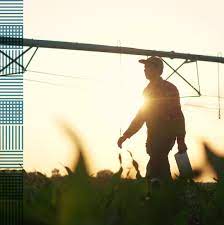[ad_1]

Global food companies are increasingly promising to make progress in reducing emissions across their end-to-end value chain. But some companies are struggling. The New York Times reported that McDonalds and PepsiCo, who have set ambitious sustainability goals, are actually going backwards when it comes to emissions.
McDonalds had pledged to eliminate their emissions – “to reach net zero” – by 2050 across their value chain. But in its most recent report, McDonald’s disclosed that the company’s emissions in 2021 were 12 percent higher than its 2015 baseline.
The bulk of emissions — often more than 90% — come from the companies’ Scope 3 emissions. Scope 3 emissions are emissions not generated by the company itself but by a company’s suppliers, carriers, and contract manufacturing partners. In the food & beverage industry, farmers are the key suppliers. If soybean or wheat farmers don’t produce their commodities more sustainably, the large food companies cannot achieve their carbon reduction targets.
In the US, agriculture creates 11% of greenhouse gas emissions. Farmers create GHG emissions by driving their farm equipment, by using carbon-based fertilizers and pesticides, and by tilling the land.
While there is no silver bullet that will eliminate GHG emissions in agriculture, there are things crop farmers can do to reduce their emissions. The practice that is most recommended is for farmers to shift to “no-till.” When soil is tilled, methane is released from the plants that are breaking down beneath the soil. Tilling involves turning over the first 6 – 10 inches of soil before planting new crops. No-till farming minimizes soil disturbance while reducing the need for chemical fertilizers.
The percentage of acreage devoted to no till farming is increasing in the US because the long-term effects of intensive farming are not good for the land. But farmers face decreasing yields for the first couple years after moving to no till. Farmers may need incentives to move to no till farming on a permanent basis. Corporations looking to reduce their value chain emissions can provide those incentives by buying carbon credits. Carbon markets are an emerging tool to incentivize farmers to switch to more sustainable farming practices.
Carbon Markets for Farmers
When a company avoids, reduces, or captures more carbon than it creates, that company creates carbon offsets. Those offsets are valuable to other companies that are unable to reach carbon neutrality. A carbon market facilitates the sale of carbon offset credits by those who have them to those who need them. The credits represent GHG reductions that would not have happened without the incentive provided by the carbon market.
One such market is Truterra, a Land o’Lakes subsidiary. Food companies such as Campbells and Nestle Purina are shown as participants on their website. According to the company, its program paid $4 million to farmers for 200,000 metric tons of carbon in 2021. Payments ranged from an average of $20,000 to as high as $100,000.
Indigo AG is another marketplace. This program had more than 2,500 farmers and 5.5 million acres enrolled, helping generate roughly 133,000 carbon credits.
Verification that carbon really is being reduced is critical to getting large food companies and retailers to buy the credits. At Indigo, soil samples and on-farm data are collected. A hybrid approach of measurement and modeling are used to quantify emissions reductions . The numbers and math are verified by an external carbon registry, the Climate Action Reserve.
Trimble, a tech company providing solutions for the agriculture and transportation industries, has been helping farmers navigate carbon markets in Canada for roughly 15 years. “This type of thing is still very new in the U.S., though,” said Darryl Matthews, the company’s senior vice president of natural resources.
Trimble works with agriculture protocols that help farmers reduce their carbon footprint. Through a carbon exchange component in its software, Trimble gathers the necessary data to certify that a farmer has followed a protocol correctly, creating a certain number of carbon credits based on acreage and other factors. Trimble aggregates those credits and sells them on a carbon exchange, ultimately creating an income stream that Trimble pays back to the farmer. To date, Trimble has paid out more than $50 million to farmers.
Agriculture Carbon Markets Have Issues
There are concerns about agricultural carbon markets though. One key concern is the accuracy of the estimates for soil-based carbon removals. How carbon accumulates in soil can vary substantially based on composition, geography and depth, and there’s a relative scarcity of historical sampling data.
Giana Amador, the co-founder and policy director of Carbon180 – a climate policy nonprofit – certainly has concerns. “Taking meter-long soil cores on hundreds or thousands of acres, it’s really onerous,”. Over a dozen different protocols have been developed for generating ag-based soil credits, and they vary widely in how much physical sampling is called for (or even whether it’s required at all). Ms. Amador says that to accurately evaluate soil carbon content, rigorous on-the-ground sampling is a must.
Another problem is that offsets are sold on the promise that carbon will be stored for decades, but farmers make agricultural decisions on what to do with their fields annually. If you do ‘no-till’ for one year, but the next year switch back to intensive tilling and the carbon dioxide is released creating no net carbon savings. Indigo deals with this uncertainty by pooling credits together and holding back a portion of them as a buffer against future practice reversals.
[ad_2]
Source link












